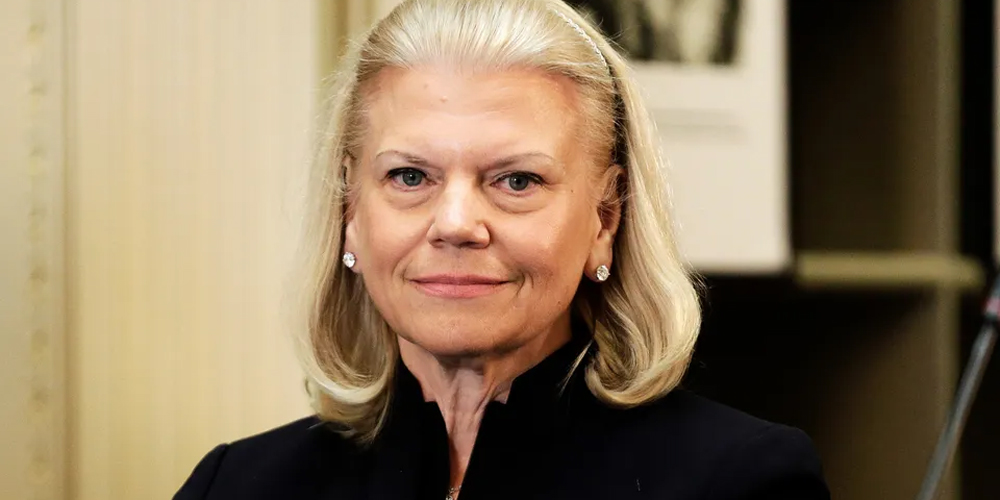Ginni Rometty: Pioneering Change at IBM
Ginni Rometty served as the CEO of IBM from 2012 to 2020, a period marked by significant transformation and adaptation in the tech landscape. Under her leadership, IBM evolved to meet the challenges posed by rapid technological advancements. This article explores Rometty’s innovative strategies and the profound impact she had on IBM and the broader tech industry.
1. Early Life and Career
Ginni Rometty was born in 1957 in Chicago, Illinois. Growing up, she was driven by a passion for learning and technology. She attended Northwestern University, where she earned a degree in computer science and electrical engineering. Rometty’s journey into the tech world began when she joined IBM in 1981 as a systems engineer. Her early experiences laid a strong foundation for her future leadership role.
Career Progression
Rometty’s rise through the ranks at IBM was swift. She held various leadership positions in sales, marketing, and strategy, each role showcasing her ability to drive results. Her leadership style emphasized collaboration and innovation, which contributed to her rapid advancement. By 2011, she was appointed as the Senior Vice President of Sales, Marketing, and Strategy, a position that equipped her with the skills needed for the CEO role the following year.
2. Becoming CEO: A New Era for IBM
In October 2011, Ginni Rometty made history by being named the CEO of IBM, becoming the first woman to lead the company. Her appointment signified a new era for IBM, especially as it faced the challenge of revitalizing a company known for its legacy products while navigating a shift toward cloud computing and AI.
Strategic Vision
Rometty’s strategic vision focused on three key areas: cloud computing, data analytics, and cognitive computing. She recognized that for IBM to thrive, it needed to innovate and adapt to the changing landscape. By prioritizing these areas, Rometty aimed to position IBM as a leader in the tech industry.
3. Emphasis on Cloud Computing
Under Rometty’s leadership, IBM made significant investments in cloud computing. She understood that cloud technology was crucial for the company’s future growth and relevance. In 2013, IBM acquired SoftLayer, enhancing its cloud infrastructure capabilities and solidifying its position in the market.
IBM Cloud Strategy
Rometty introduced the IBM Cloud strategy, which emphasized hybrid cloud solutions. This approach allowed businesses to combine public and private cloud services, providing flexibility and scalability essential for modern enterprises. By embracing hybrid cloud technology, IBM aimed to meet diverse customer needs and drive digital transformation across various industries.
4. Championing Artificial Intelligence
Ginni Rometty also championed artificial intelligence (AI) through the IBM Watson initiative. Watson gained fame for winning the quiz show Jeopardy! in 2011, showcasing its advanced cognitive capabilities. Rometty saw the potential for AI to transform various industries, including healthcare, finance, and education.
Watson’s Applications
IBM Watson became a cornerstone of Rometty’s vision for the future of technology. Its applications in healthcare, such as assisting doctors in diagnosing diseases and personalizing treatment plans, demonstrated the transformative power of AI. In finance, Watson helped firms analyze market trends and make data-driven decisions. Rometty’s commitment to AI showcased her forward-thinking approach and positioned IBM as a leader in cognitive computing.
5. Focus on Diversity and Inclusion
Ginni Rometty prioritized diversity and inclusion within IBM, believing that diverse teams drive innovation and creativity. Under her leadership, IBM implemented various programs aimed at increasing the representation of women and minorities in tech roles, recognizing that diverse perspectives enhance problem-solving and decision-making.
Initiatives for Women in Tech
Rometty was instrumental in launching initiatives that supported women in technology. IBM’s “Women in Technology” program aimed to empower female employees by fostering mentorship and networking opportunities. These initiatives not only helped women advance their careers but also contributed to a more inclusive corporate culture at IBM.
6. Navigating Challenges
Rometty’s tenure as CEO was not without challenges. IBM faced intense competition from companies like Amazon and Microsoft in the cloud space. Additionally, the company struggled with declining revenues from its traditional hardware and software businesses as it transitioned to new technologies.
Responding to Market Dynamics
Rometty responded to these challenges by focusing on innovation and agility. She emphasized the importance of adapting to market dynamics and consumer needs. By fostering a culture of adaptability, Rometty aimed to position IBM for future success and relevance in an increasingly competitive landscape.
7. Leaving a Lasting Legacy
Ginni Rometty stepped down as CEO in April 2020 after nearly eight years at the helm. Her legacy at IBM is one of transformation and resilience. She guided the company through significant changes, ensuring its relevance in the tech industry amid rapid advancements and shifts in consumer demand.

Recognition and Awards
Throughout her career, Rometty received numerous accolades and recognition for her contributions to technology and business leadership. She was named one of Fortune’s “Most Powerful Women” multiple times, and her influence extended beyond IBM as she became a role model for women in leadership positions. Her contributions to the tech industry continue to inspire future leaders.
8. Insights and Leadership Lessons
Rometty’s leadership journey offers valuable insights for aspiring business leaders. Her experiences exemplify the importance of vision, adaptability, and inclusivity in achieving success. Here are some key lessons drawn from her leadership:
- Embrace Change: Rometty’s ability to embrace change was crucial for IBM’s transformation and her own growth as a leader.
- Invest in People: Fostering diversity and inclusion can drive innovation and improve overall company performance.
- Focus on Innovation: Staying ahead in a competitive landscape requires constant innovation and adaptation to market trends.
- Lead with Integrity: Ethical leadership builds trust and loyalty among employees and stakeholders.
9. The Future of IBM Post-Rometty
After Rometty’s departure, IBM continues to navigate the evolving tech landscape. The company remains committed to cloud computing, AI, and other emerging technologies. New leadership is tasked with building on the foundation Rometty established and driving further innovation.
Continuing the Legacy
IBM’s ongoing initiatives in cloud services, AI, and diversity are critical for its future success. Rometty’s legacy serves as a guide for the company’s strategic direction, reminding leaders of the importance of adaptability and a strong focus on technology. Maintaining a commitment to innovation and inclusivity will be vital as IBM seeks to stay competitive in a rapidly changing environment.
10. Conclusion
Ginni Rometty’s tenure as CEO of IBM marked a pivotal moment in the company’s history. Her visionary leadership and commitment to innovation have left a lasting impact not only on IBM but also on the broader tech industry. As industries continue to evolve, Rometty’s strategies and insights will remain relevant for future business leaders. Her journey serves as an inspiration, illustrating the transformative power of leadership in technology.
Through her work, Ginni Rometty has demonstrated that effective leadership combines vision, adaptability, and a commitment to diversity. Her story is a testament to the importance of embracing change and driving progress in an ever-evolving business landscape.







